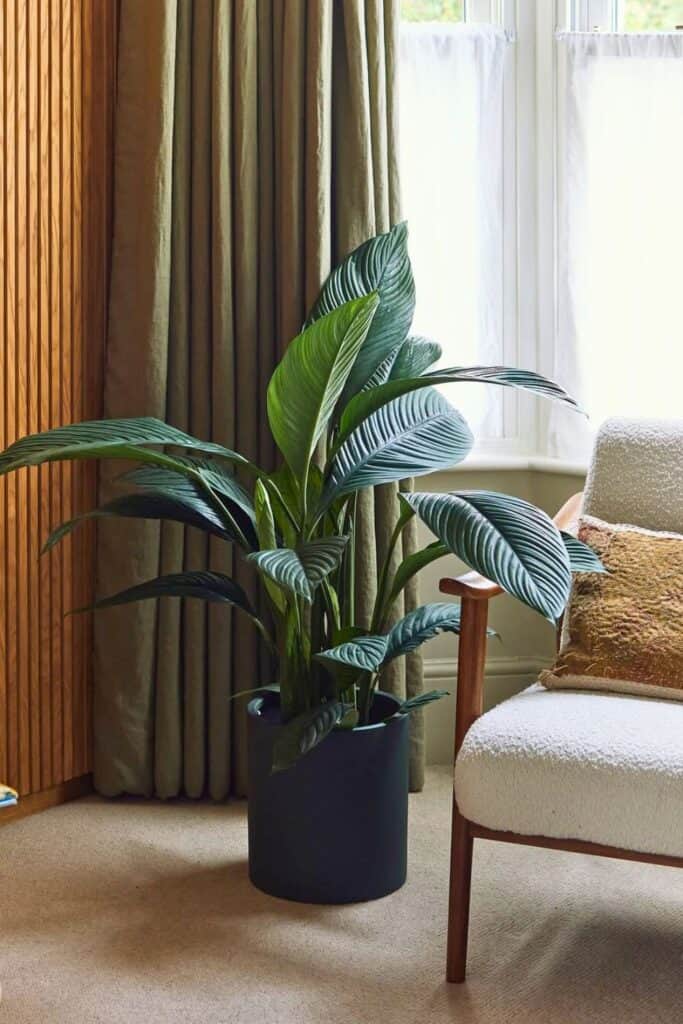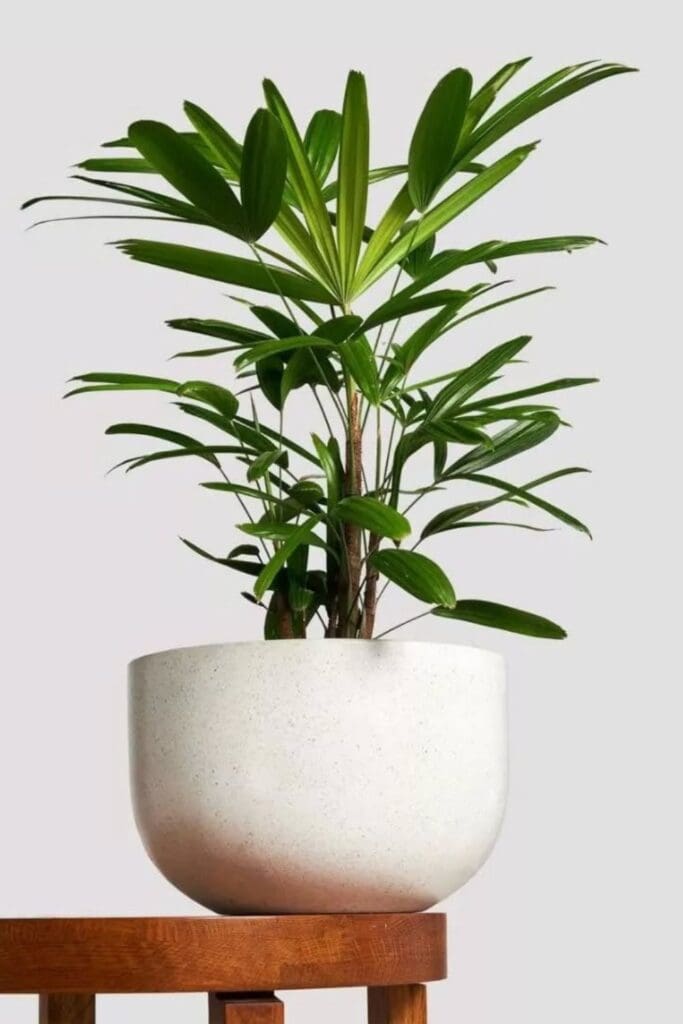Indoor plants are more than just a stylish home decor trend; they are natural air purifiers that can significantly improve your indoor air quality. These plants absorb toxins, increase humidity, and produce oxygen, making your home a healthier place. Here are 21 types of air purifier indoor plants that can transform your living space into a green oasis.

Contents
- 1 Best Air Purifying House Plants for Indoors
- 1.1 1. Spider Plant (Chlorophytum comosum)
- 1.2 2. Snake Plant (Sansevieria trifasciata)
- 1.3 3. Peace Lily (Spathiphyllum)
- 1.4 4. Aloe Vera
- 1.5 5. Boston Fern (Nephrolepis exaltata)
- 1.6 6. Areca Palm (Dypsis lutescens)
- 1.7 7. Rubber Plant (Ficus elastic)
- 1.8 8. Dracaena (Dracaena spp.)
- 1.9 9. English Ivy (Hedera helix)
- 1.10 10. Bamboo Palm (Chamaedorea seifrizii)
- 1.11 11. Gerbera Daisy
- 1.12 12. Golden Pothos (Epipremnum aureum)
- 1.13 13. Philodendron (Philodendron spp.)
- 1.14 14. Weeping Fig (Ficus benjamina)
- 1.15 15. Chrysanthemum
- 1.16 16. Chinese Evergreen (Aglaonema)
- 1.17 17. Lady Palm (Rhapis excelsa)
- 1.18 18. ZZ Plant (Zamioculcas zamiifolia)
- 1.19 19. Dwarf Date Palm (Phoenix roebelenii)
- 1.20 20. Fiddle Leaf Fig (Ficus lyrata)
- 1.21 21. Parlor Palm (Chamaedorea elegans)
- 2 How to Care for Indoor Air Purifier Plants
- 3 Conclusion
Best Air Purifying House Plants for Indoors
1. Spider Plant (Chlorophytum comosum)

The spider plant is a hardy, low-maintenance plant known for its ability to remove toxins like formaldehyde and xylene from the air. Its lush green leaves with white stripes add a touch of elegance to any room.
2. Snake Plant (Sansevieria trifasciata)

Also known as mother-in-law’s tongue, the snake plant is one of the most efficient air purifiers. It absorbs toxins such as formaldehyde, xylene, and nitrogen oxides, and it can even produce oxygen at night, making it perfect for bedrooms.
3. Peace Lily (Spathiphyllum)

Peace lilies are not only beautiful but also excellent at filtering out harmful chemicals like benzene, formaldehyde, and trichloroethylene. Their elegant white blooms can brighten up any space.
4. Aloe Vera

Aloe vera is well-known for its medicinal properties, but it also purifies the air by removing formaldehyde and benzene. It’s a succulent that requires minimal care and can thrive in low-light conditions.
5. Boston Fern (Nephrolepis exaltata)

Boston ferns are great at increasing humidity and removing toxins like formaldehyde and xylene. They thrive in humid environments, making them ideal for bathrooms or kitchens.
6. Areca Palm (Dypsis lutescens)

The areca palm is a natural humidifier and air purifier. It effectively removes toxins such as formaldehyde, xylene, and toluene from the air, and its feathery fronds add a tropical touch to your home.
7. Rubber Plant (Ficus elastic)

Rubber plants are known for their large, glossy leaves that can effectively remove toxins like formaldehyde from the air. They thrive in bright, indirect light and require minimal watering.
8. Dracaena (Dracaena spp.)

There are many varieties of dracaena, all of which are excellent air purifiers. They remove toxins such as benzene, formaldehyde, and trichloroethylene from the air and add a splash of color with their vibrant foliage.
9. English Ivy (Hedera helix)

English ivy is a versatile plant that can be grown in pots or as a hanging plant. It is effective at removing toxins such as benzene, formaldehyde, and trichloroethylene from the air.
10. Bamboo Palm (Chamaedorea seifrizii)

Bamboo palms are great for removing toxins like formaldehyde, benzene, and trichloroethylene from the air. Their elegant, arching fronds add a touch of nature to your home.
11. Gerbera Daisy

Gerbera daisies are not only bright and cheerful but also effective at removing toxins like benzene, formaldehyde, and trichloroethylene. They require plenty of sunlight and well-drained soil.
12. Golden Pothos (Epipremnum aureum)

Golden pothos, also known as devil’s ivy, is a hardy plant that thrives in various conditions. It is excellent at removing indoor air toxins such as formaldehyde, xylene, and benzene.
13. Philodendron (Philodendron spp.)

Philodendrons are popular houseplants known for their air-purifying abilities. They effectively remove toxins like formaldehyde from the air and are easy to care for, making them ideal for beginners.
14. Weeping Fig (Ficus benjamina)

The weeping fig is an elegant plant that can remove toxins like formaldehyde, xylene, and toluene from the air. It requires bright, indirect light and regular watering.
15. Chrysanthemum

Chrysanthemums, or mums, are beautiful flowering plants that also purify the air. They remove toxins like benzene, formaldehyde, and xylene and require bright light to bloom.
16. Chinese Evergreen (Aglaonema)

Chinese evergreens are hardy plants that thrive in low light and are effective at removing toxins like benzene and formaldehyde. Their variegated leaves add a pop of color to any room.
17. Lady Palm (Rhapis excelsa)

Lady palms are elegant, slow-growing plants that are excellent at removing toxins like formaldehyde and ammonia from the air. They thrive in low-light conditions and require regular watering.
18. ZZ Plant (Zamioculcas zamiifolia)

The ZZ plant is a hardy, low-maintenance plant that is effective at removing toxins like xylene, toluene, and benzene from the air. It thrives in low light conditions and requires minimal watering, making it perfect for busy individuals or low-light environments.
19. Dwarf Date Palm (Phoenix roebelenii)

Dwarf date palms are great for removing indoor air pollutants such as formaldehyde and xylene. They thrive in bright, indirect light and require regular watering.
20. Fiddle Leaf Fig (Ficus lyrata)

The fiddle leaf fig is a popular houseplant known for its large, violin-shaped leaves. It is effective at removing indoor air toxins and requires bright, indirect light and regular watering.
21. Parlor Palm (Chamaedorea elegans)

The parlor palm is a popular houseplant known for its ability to remove indoor air toxins such as formaldehyde, benzene, and carbon monoxide. It’s a low-maintenance plant that thrives in low to medium light conditions and adds a touch of elegance to any indoor space.
How to Care for Indoor Air Purifier Plants
Proper care is essential for keeping your indoor plants healthy and effective at purifying the air. Here are some general tips:
- Light: Most air-purifying plants thrive in bright, indirect light. Ensure they get adequate light but avoid direct sunlight, which can scorch their leaves.
- Watering: Overwatering is a common mistake. Water your plants when the top inch of soil feels dry. Ensure proper drainage to prevent root rot.
- Humidity: Many indoor plants prefer high humidity. Use a humidifier or place a tray of water near the plants to increase humidity levels.
- Fertilizing: Feed your plants with a balanced, water-soluble fertilizer during the growing season (spring and summer) to encourage healthy growth.
- Cleaning: Dust can accumulate on the leaves and hinder photosynthesis. Wipe the leaves with a damp cloth regularly to keep them clean.
Conclusion
Incorporating air-purifying plants into your home not only enhances the aesthetic appeal but also improves indoor air quality. These 21 types of indoor plants can help you breathe easier, reduce toxins, and create a healthier living environment. So, go ahead and bring some greenery into your home – your lungs will thank you!
